Before After Photos
The facelift is one of cosmetic surgery’s oldest procedures and, of course, has been tremendously refined over the years. Each person requires individual evaluation, and considerations for men are very different from those for women with respect to aesthetics, recovery and scar placement. A facelift may be done in conjunction with eyelid surgery, chin augmentation and/or nose surgery. The facelift surgery may even be segregated into component procedures, such as a neck lift or a mid-face lift.
Procedure:
A facelift may take 4 to 5 hours under general anesthesia after which a patient awakens with a light head wrap that remains in place for 1 to 2 days. Usually after about a week of recovery, a patient is comfortable enough to present him or herself in public. However, heavy lifting and exercise is limited for approximately a month following surgery. Out-of-town patients usually stay on South Beach for 5 to 7 days before returning home. The fees for facelift surgery vary considerably depending on the extent of the desired procedure and any ancillary procedures that may be performed.
































Breast augmentation — also known as augmentation mammoplasty — is surgery to increase breast size. This procure can also reduce breast size and volume in the chest area.
Breast implants involves placing implants under breast tissue or chest muscles. The sizes of implants vary and options of sizes will be shown to clients during Dr. Tiller’s initial consultation.
For some women, breast augmentation is a way to feel more confident. For others, it’s part of rebuilding the breast for various conditions. If you’re considering breast augmentation, consult with our plastic surgeon. Make sure you understand what surgery involves, including possible risks, complications and follow-up care.
Why it’s done
Breast augmentation might help you:




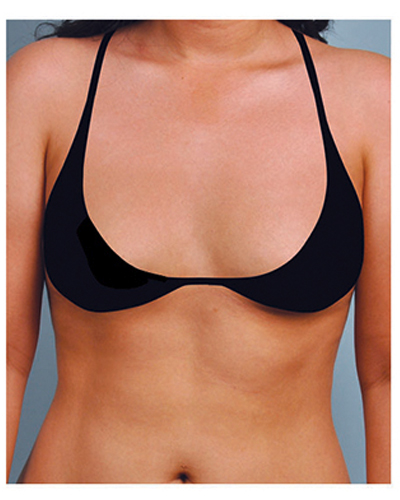





- Enhance your appearance if you think your breasts are too small or that one is smaller than the other
- Adjust for a reduction in the size of your breasts after pregnancy
- Correct uneven breasts after breast surgery for other conditions
- Improve your self-confidence










Liporemoval is the suction-removal of fat that may be applied to areas from the face to the ankles of men of all ages. It is a tremendously useful adjunct procedure to skin tightening procedures, but also stands on its own as a cosmetic-enhancing surgery.
Procedure:
Dr. Tiller developed a method for men that aggressively removes fat from areas with the overlying skin subsequently adhered closely to the underlying muscle resulting in a tight, sculpted appearance that is not the same result desired by women. A supportive garment must be worn for a week or possibly longer following the procedure.










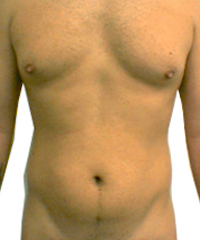



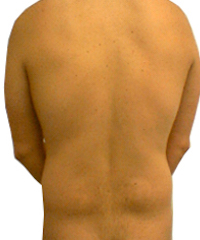
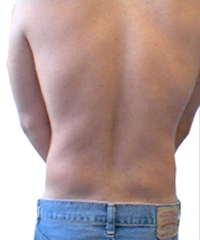
























Patients have the ability the change and enhance the appearance of their buttocks through a procedure that Dr. Tiller specializes in: the Brazilian Butt Lift. Patients can be unhappy with their buttocks due to their size or shape or the presence of sagging skin. Dr Tiller can enhance their figures with butt lift surgery. This procedure is often ideal for those who have lost weight and feel their buttocks lack shape or who simply wish to improve the appearance of their backsides.
A butt lift is a surgical procedure that can be customized to meet each individual patient’s unique needs and desired results. Patients with excess drooping skin may opt for a traditional excisional butt lift, while those who want to subtly augment their backsides may prefer the popular Brazilian butt lift. In any event, butt lift surgery can make having a firm and sexy rear end possible.
Like most plastic surgery procedures, butt lift surgery can be performed on its own or in combination with other procedures such as abdominoplasty and breast augmentation as part of a more comprehensive body contouring plan. Contact Dr. Tiller’s office for a consultation about this or other possible treatment and procedures.
























Doctor Tiller has been using Wrinkle and Facial Line Removal Injections on his patients for years to successfully treat wrinkles and facial creases. Wrinkle and Facial Line Removal Injections 


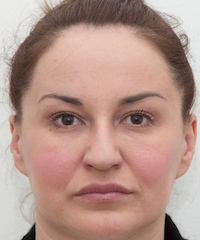










is a brand name of a toxin
are a group of toxins produced by the bacterium Clostridium botulinum. There are also other brand names, such as Dysport and Xeomin.
How Do Wrinkle and Facial Line Removal Injections Work?
Wrinkle and Facial Line Removal Injections blocks signals from the nerves to the muscles. The injected muscle can’t contract. That makes the wrinkles relax and soften.
Wrinkle and Facial Line Removal Injections is most often used on forehead lines, crow’s feet (lines around the eye), and frown lines. Wrinkles caused by sun damage and gravity will not respond to Wrinkle and Facial Line Removal Injections.
How Is a Wrinkle and Facial Line Removal Injections Procedure Done?
Getting Wrinkle and Facial Line Removal Injections takes only a few minutes and doesn’t require anesthesia. Wrinkle and Facial Line Removal Injections is injected with a fine needle into specific muscles with only minor discomfort.
How Long Does a Wrinkle and Facial Line Removal Injections Injection Last?
The effects from Wrinkle and Facial Line Removal Injections will last three to six months. As muscle action gradually returns, the lines and wrinkles begin to reappear and need to be treated again. The lines and wrinkles often appear less severe with time because the muscles are shrinking.
What Are the Side Effects of Wrinkle and Facial Line Removal Injections?
Temporary bruising is the most common side effect of Wrinkle and Facial Line Removal Injections. Headaches, which end in 24 to 48 hours, can happen, but this is rare. A small percentage of patients may develop eyelid drooping. This usually ends within three weeks. Drooping usually happens when the Wrinkle and Facial Line Removal Injections moves around, so don’t rub the treated area for 12 hours after injection or lie down for three to four hours.
Who Should Not Receive Wrinkle and Facial Line Removal Injections?
People who are pregnant, breastfeeding, or have a neurological disease should not use Wrinkle and Facial Line Removal Injections. Since the procedure doesn’t work for all wrinkles, you should consult with a doctor first.














Dr. Tiller also performs lip augmentation and is performed with hyaluronic acid-based fillers, like Juvéderm, Volbella, Vollure, and Restylane, but, Wrinkle and Facial Line Removal Injections can also be used to slightly shape up the lips to create a “poutier look”. When used alone, or in combination with fillers, Wrinkle and Facial Line Removal Injections gives lips a subtle pout-magnification by flipping out the lip line, rolling the lip gently outward, and giving the appearance of a fuller, sexier pout.
Keep in mind, though, that filler and Wrinkle and Facial Line Removal Injections are not the same, and do not bring the same results. Filler adds volume, which makes the lip appear larger by literally making it bigger, says Liotta, while Wrinkle and Facial Line Removal Injections relax muscles around the mouth, called the “orbicularis oris,” and rolls the lip outward (i.e. “flipping” it), creating the illusion of a bigger lip — without the added volume.

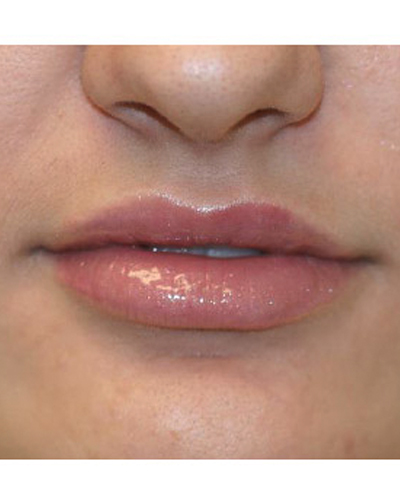






















































Tummy tuck surgery, also known as abdominoplasty, removes excess fat and skin and, in most cases, restores weakened or separated muscles creating an abdominal profile that is smoother and firmer.
A flat and well-toned abdomen is something many of us strive for through exercise and weight control. Sometimes these methods cannot achieve our goals.
Even individuals of otherwise normal body weight and proportion can develop an abdomen that protrudes or is loose and sagging. The most common causes of this include:





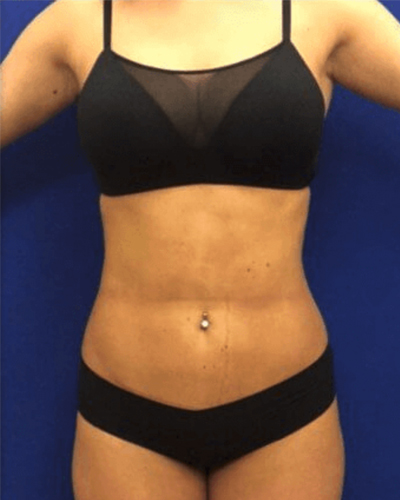


- Aging
- Heredity
- Pregnancy
- Prior surgery
- Significant fluctuations in weight








Dr. Tiller developed the abdominal augmentation procedure in 1998 to achieve the definition of a well-developed abdominal musculature. The most significant improvement has been implant material developed by Allied Biomedical/Implantech. The implants are soft enough to conform to the underlying or overlying muscle for a natural appearance and feel.
Procedure:
Through an incision at the belly button 6 to 8 individually contoured, very soft but solid silicone implants are placed overlying the abdominal musculature. The procedure is the longest of the cosmetic procedures that Dr. Tiller performs and requires approximately 2 to 3 hours. Post-operative pain is well-managed and results can be appreciated immediately with the appearance of a very well-developed abdomen. The implants feel natural and give as the body bends frequently during sports and everyday activities. As Dr. Tiller developed these body augmentation procedures, he has placed great importance in achieving not only the desired good look but also a natural feel. For some patients Dr. Tiller recommends a “tummy-tuck” to remove excess skin the patient may have had prior to surgery. As with any prospective patient, this abdominal augmentation surgery procedure requires an individualized consultation.
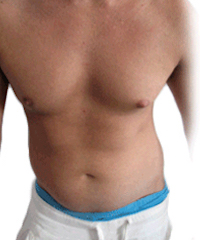

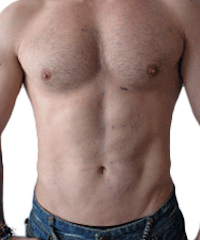









Even with frequent exercise, men sometimes find that they still are unable to achieve the chest development they desire. Pectoral implants shape, enlarge and firm the chest muscles, helping one achieve the natural appearance desired when the pectoral muscles are either flexed or relaxed. Very often Deltoid Augmentations and Lattisimus Augmentations are done at the same time as Bicep/Tricep Augmentations. Each of these augmentations could also, of course, be performed separately.
Procedure:
An incision is made high in the armpit, and a pocket is made beneath the chest muscle and on top of the ribs. A soft, solid silicone implant cut to specifically fit each patient is then inserted into the pocket. A very small dressing is placed under the arms. Typically, a patient can see a change immediately after surgery. During recovery, the patient is required not to lift his arms for 2 days after surgery. Then dressings are removed and the patient follows a gentle exercise program for 1 to 2 weeks to enable a full and comfortable range of motion of the arms. Generally within a week or two, the patient may resume physical use of the upper body muscles. Within one month, the patient may begin full pectoral muscular activity. There are few surgical risks, including infection, bleeding, asymmetry, scarring and muscle and/or nerve damage.





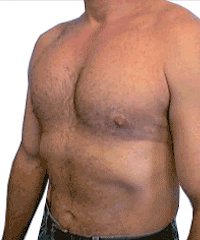


































Many people are dissatisfied with the shape or size of their calf muscles to the point that they avoid wearing garments that expose their legs. Both women and men seek calf implants for different reasons. While women usually desire calf implants to achieve anatomical balance to sculpt a lower leg that is more proportionate to the thighs, men typically seek an appearance that emphasizes the bulk of the calf muscle. For some, even intensive exercise may not significantly enlarge the calf muscles, particularly in relation to one’s larger thigh muscles. In addition to cosmetic augmentation, calf implants can also correct deformities resulting from injury or nerve diseases that cause muscle deterioration.
Calf augmentation addresses these concerns with solid, soft silicone implants. Generally, anyone in average physical condition and general good health is a candidate for calf implant surgery. A critical element in determining the right size and shape for a particular patient’s calf implant is the surgeon’s skill in correctly assessing the desired proportions while anticipating changes that may occur after surgery.
Procedure:
Individually contoured implants are placed on top of the calf muscles through short incisions behind each knee. The result is an immediate appearance of muscle size and definition. Usually the patient is able to walk comfortably within several days and may return to full physical activities within 4 to 6 weeks. There are a few surgical risks, including infection, bleeding, nerve and/or muscle damage, slippage and asymmetry.









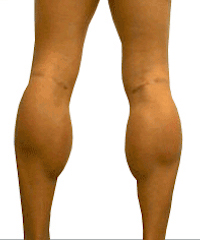














With the increasing popularity of pectoral augmentation over the past 10 to 12 years, men have also been asking for a procedure that can increase the definition and size of the upper arm muscles. Bicep augmentations can also be performed by Dr. Tiller to help correct the physical deformity resulting from bicep tears from weight training or other trauma. Dr. Tiller pioneered techniques for bicep and tricep augmentation and has performed these surgeries for over 25 years.
Procedure:
Very soft but solid silicone implants are placed beneath the bicep and tricep muscles through short incisions beneath the arm. Often the bicep implants and tricep implants are placed at the same time as pectoral augmentation using the same incision in the armpit. There is modest discomfort for a few days following the procedure. The surgery does not affect muscle function and strength, and full arm work-outs may resume within 4 to 6 weeks. Substantial increase in size and definition of the upper arm muscles may be achieved with this procedure.

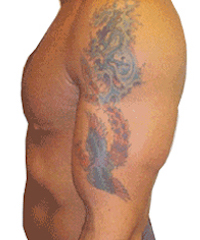






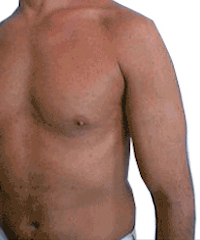








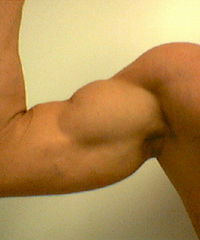






















The buttocks region is not easily enlarged or shaped by weight training or diet. Individuals who wish to lift and shape the buttock can choose from a variety of different sizes and shapes of buttock implants. The decision for the shape and size of the implants depends on each person’s individual desires and on his general body build. Buttock implants are very soft, solid silicone implants and are completely unlike breast implants. Generally, anyone in average physical condition and general good health is a candidate for buttock implant (gluteal augmentation) surgery.
Procedure:
Placed into each buttock area through a single incision overlying the tailbone, buttock implants are positioned to look as natural as possible for the optimal cosmetic effect. Since this area of the body is required for walking, sitting and so many other movements, patients might experience greater pain during the recovery period than other common cosmetic surgery procedures, and the recovery time is usually longer. Pain medications typically are prescribed to help with the discomfort. But after approximately 5 to 7 days, the patient is able to be up and about, moving, walking and sitting more comfortably. There is generally very little swelling and bruising after surgery so the results may be seen almost immediately. Usually full physical activities are permitted within a month of surgery. There are a few surgical risks, including infection, bleeding, nerve and/or muscle damage, slippage and asymmetry.












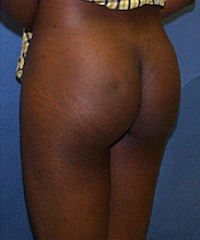



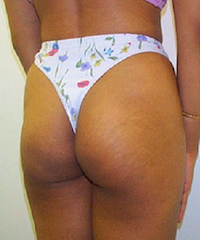























The name of this procedure may not be what one thinks. The name was coined by a writer of a popular men’s magazine in an article about Dr. Tiller’s work in the field of male cosmetic surgery and the procedure that he developed for bicep, tricep, and pectoral augmentation (therefore, a “six-pack” of implants). Information for these individual procedures is on this website. These procedures are tolerated very easily when performed in one appointment on the well-selected individual. This “six-pack” procedure takes several hours but gives the most dramatically positive results of any cosmetic procedure that Dr. Tiller performs. And these results can be appreciated soon after surgery.
























The “Quads” is a collection of four different muscles that are positioned on the front of the thigh and work to flex the hip and extend the knee. In order to achieve a broader, more developed-looking leg a soft silicone implant is placed beneath the fibrous covering (the fascia) of the muscle of the Quads group known as the rectus femoris. The Sartorius is a long narrow muscle running along the inner thigh. Augmentations of this muscle are performed similarly to the Quads.
Procedure:
With the patient asleep – general anesthesia – an incision is made up near the inquinal crease. The skin is lifted off of the underlying fascia of the rectus femoris and a small incision is made in the fascia. A pocket in which the implant is to be placed is made over the front of the rectus femoris. A solid but soft silicone implant is then cut during surgery to fit the requirements for the individual patient. The implant is then inserted into the pocket and the leg is flexed and extended in order to check the result. The overlying fascia is then closed with sutures and the skin incision is closed with dissolvable sutures. A light dressing is placed over the incision and after a certain period of recovery the patient is released to go home.




















